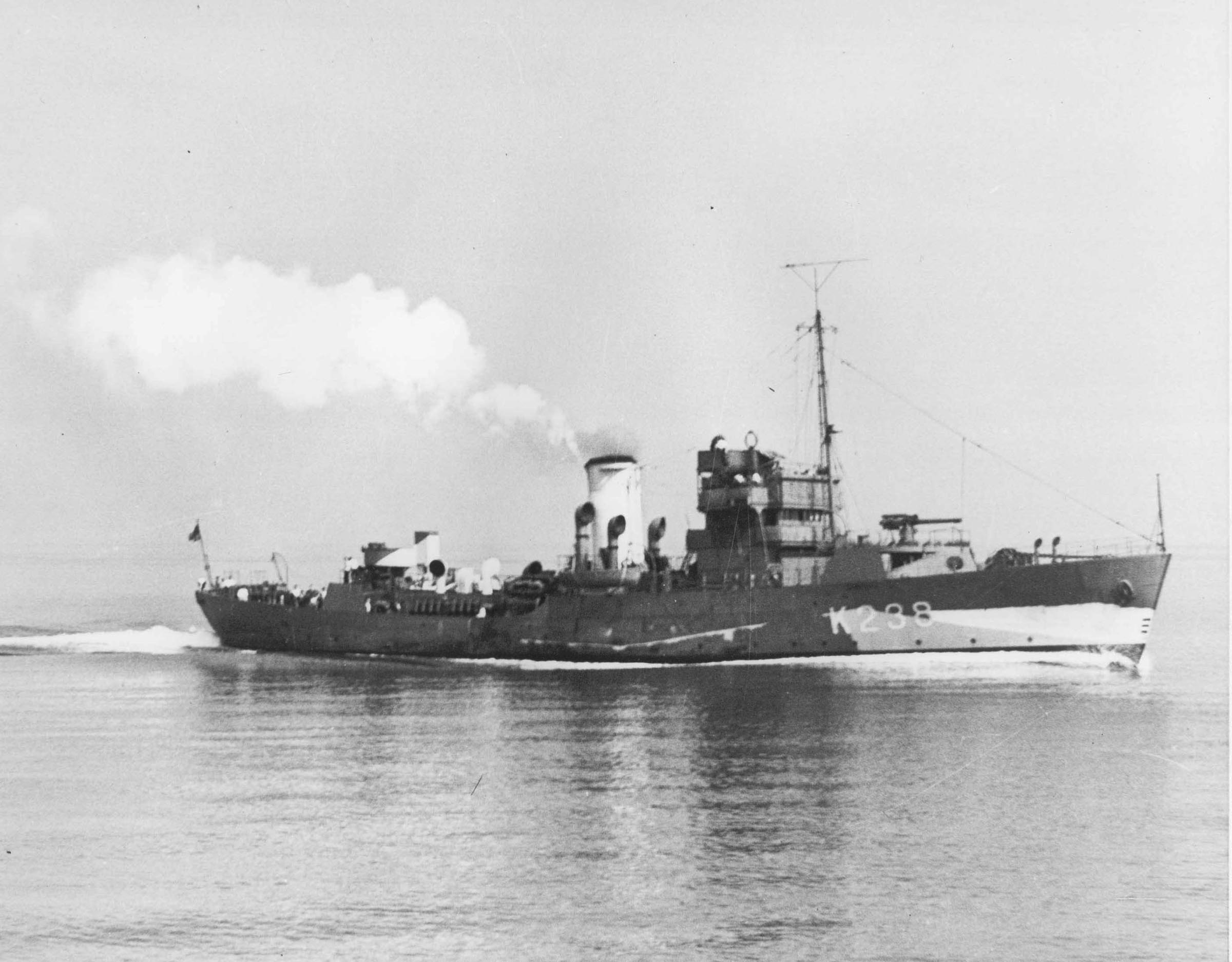HMCS WOODSTOCK (K238)

HMCS WOODSTOCK
The History of HMCS WOODSTOCK
Commissioned on May 1, 1942, at Montreal, she arrived at Halifax on May 23 and, after working up at Pictou, joined WLEF. Assigned to Operation "Torch," she arrived on September 23 at Londonderry from convoy HX.207 and proceeded to the Humber for six weeks' refit, including extra A/A armament. While serving as escort to U.K.-Mediterranean convoys, on January 1, 1943, she sank MTB 105 250 miles northwest of the Azores, after merchant ship carrying it had been sunk. Woodstock returned to Canada in March, and in April, after repairs at Halifax, joined EG C-1 for one round trip to the U.K. In June she was transferred to EG 5, Western Support Force, at St. John's but late that month was reassigned to EG C-4 at Londonderry. She escorted only one convoy as member of that group before commencing refit late in June at Liverpool, N.S. Completed at Halifax in mid-September, the refit was followed by three weeks' workups at Pictou, the ship then rejoining C-4. In April, 1944, while at Londonderry, she was allocated to Western Approaches Command for invasion duties, and was so employed for the next three moths. She left 'Derry for the last time on August 3, 1944, for two months' refit at Liverpool, N.S. She left Halifax on October 18 for the west coast, arriving at Esquimalt a month later to join Esquimalt Force. On January 27, 1945, she was paid off there for conversion to a loop-layer but upon re-commissioning on May 17 was employed as a weather ship until finally paid off on March 18, 1946. Sold in 1948 for conversion to a whale-catcher, she entered service in 1951 as the Honduran-flag Olympic Winner. She passed into Japanese ownership in 1956, was renamed Otori Maru No. 20, and in 1957, Akitsu Maru. She was broken up at Etajima in 1975.
HMCS WOODSTOCK Statistical Data
- Pendant: K238
- Type: Corvette
- Class: Revised FLOWER (1940-41 Program)
- Displacement: 1015 tonnes
- Length: 208.3 ft
- Width: 33.1 ft
- Draught: 11 ft
- Speed: 16 kts
- Compliment: 6 Officers and 79 Crew
- Arms: 1-4" Gun, 1-2 pdr, 2-20mm, Hedgehog
- Builder: Collingwood Shipyards Ltd., Collingwood. Ont.
- Keel Laid: 23-May-41
- Date Launched: 10-Dec-41
- Date Commissioned: 01-May-42
- Paid off: 27-Jan-45
